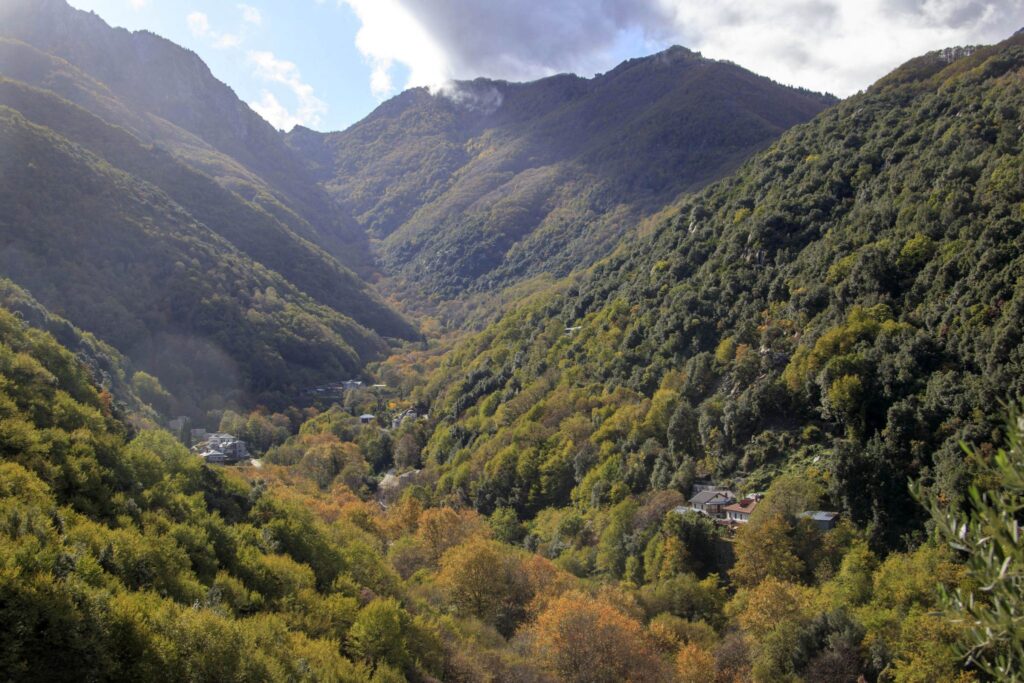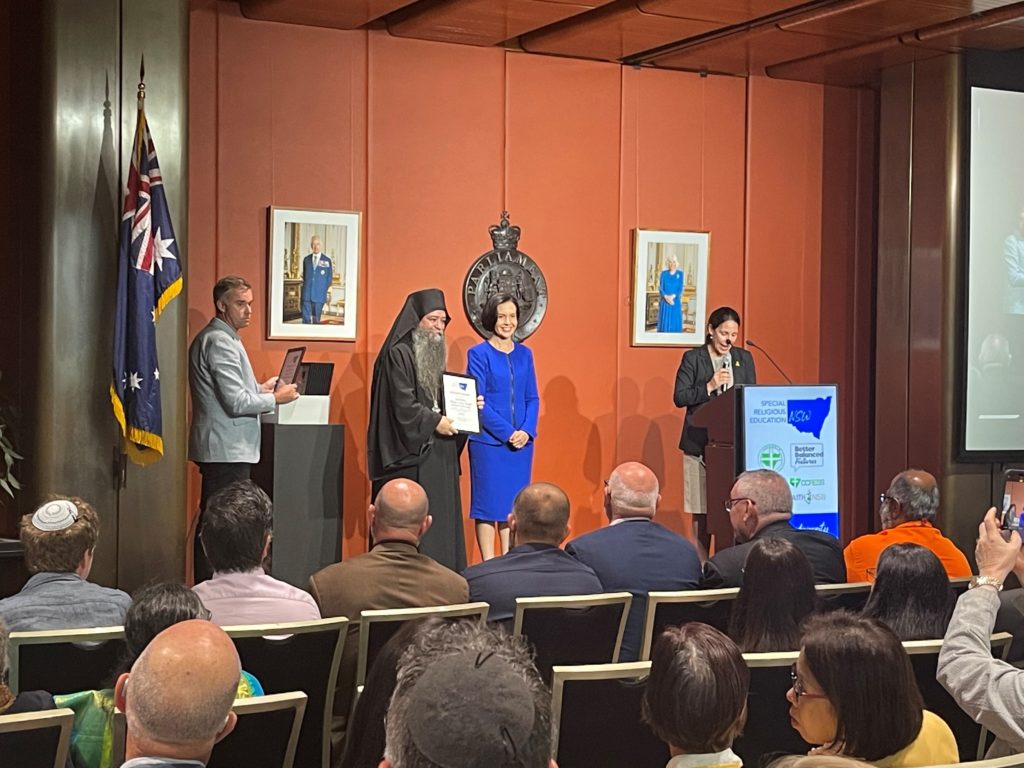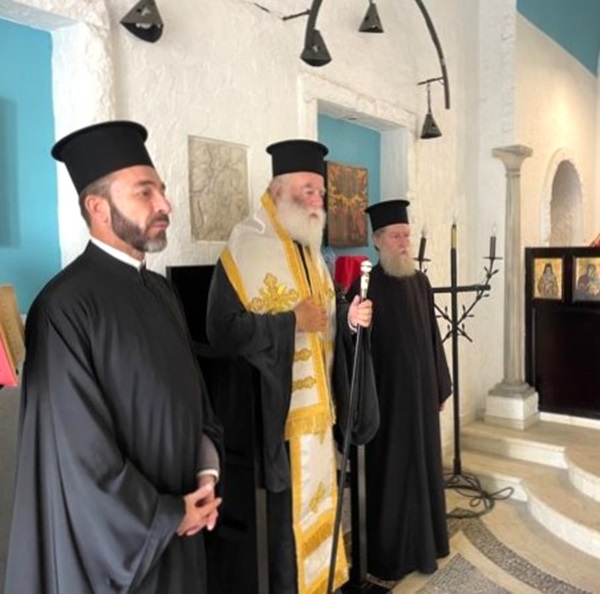Lakkoskiti – The skete of Saint Demetrios

Lakkoskiti (Romanian: Schitul Lacu) is the short form name of a small “monastic village” consisting the idiorrhythmic “skete of Aghiou Dimitriou tou Lakkou”. Sited at the north foothills of Mount Athos, in Greece, in a valley crossed by Morfonou River and surrounded by a wonderful forest of chestnut trees, it is inhabited by Romanian monks. Lakkoskiti belongs to Agiou Pavlou (Greek: Αγίου Παύλου, English: Saint Paul) Monastery.
The name is derived from the fact that the valley is narrow and very deep – the margins reaching at heights of approximately 750 meters while the bottom is at just 100-150 meters height giving the clear impression of a pit. (In Greek λάκκος – lakkos means „pit”).
Monks were living there since the 10th century, belonging to the old Amalfinon Monastery which was soon abandoned and ruined after the Schism between the Eastern Orthodox and Western Roman Catholic Church in 1054 AD. In the 14th century some Serbians borrowed money from the Vatopediou Monastery to revive the area but failed to repay it back. Inscriptions of 1606 AD show that there were Slavs living there while in 1754 the monks are documented as Moldovans. In 1760 a Moldovan monk Daniel organized it as a Skete.
After the Greek Revolution of 1821 Romanians stopped coming to Greece, as the situation was dangerous, while older monks returned home or died. Later new monks started coming again and Lakkoskiti received up to 90 monks in 24 huts. A new wider Kyriako (central church) of Saint Demetrios was built on the expenses of monk Ioustinos, along with a second church at the cemetery and a water-mill. The romanian monks had constantly financial support from their government but lived there quietly without creating any political or ethnic problems.
Lakkoskiti, being in a place hardly approachable, declined again slowly. In the mid 1990s, when only one old monk was left, a new effort started with a new brotherhood, coming partially from the Romanian coenobitic Timiou Prodromou Skete and partially from Romania. The main church and the huts were slowly rebuilt, the forest dirtroad was improved and more monks were added, under the guidance of elder Stefanos. As Lakkoskiti is far from the main roads, pilgrims-visitors are rare and so the Romanian monks can live a precise ascetical life.
View more photos HERE
— Source: asceticexperience.com
H αναδημοσίευση του παραπάνω άρθρου ή μέρους του επιτρέπεται μόνο αν αναφέρεται ως πηγή το ORTHODOXIANEWSAGENCY.GR με ενεργό σύνδεσμο στην εν λόγω καταχώρηση.
Ακολούθησε το ORTHODOXIANEWSAGENCY.gr στο Google News και μάθε πρώτος όλες τις ειδήσεις.


















